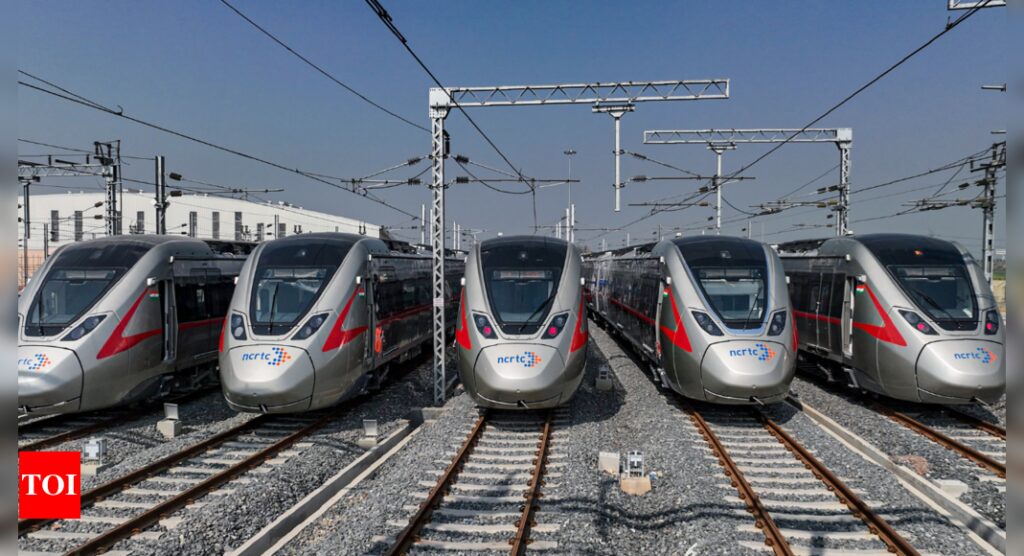[ad_1]
PM Modi will on October 20 launch the 17 km section of Delhi-Ghaziabad-Meerut RRTS, a rail-based high-speed, high-frequency, regional commute transit system connecting metropolitan and big cities, towns and urban nodes across the National Capital Region (NCR).
The foundation stone for the Delhi-Ghaziabad-Meerut corridor was laid by Prime Minister Modi on March 8, 2019.This is India’s first Regional Rail, christened RAPIDX has a design speed of 180 km/hr and an operational speed of 160 km/ hr. Its first corridor is 82 km long and under construction between Delhi-Ghaziabad-Meerut.
The 17km long section between Sahibabad and Duhai Depot is the Priority Section, which is soon going to be commissioned for the public. This section has five stations, Sahibabad, Ghaziabad, Guldhar, Duhai and Duhai Depot. Driven by electric traction, RRTS is the greenest mode of transport in the National Capital Region.
Delhi-Meerut RRTS Inauguration: PM Modi to inaugurate India’s first RAPIDX project on this date in Oct
Once operational, the Delhi-Ghaziabad-Meerut RRTS will take more than one lakh private vehicles off of the road and is estimated to reduce ~2,50,000 tonnes of carbon dioxide in vehicular emissions per year. Multi-modal integration is the core principle of RRTS implementation. To encourage the use of public transport, RRTS stations are being seamlessly integrated with the existing modes of public transport like bus stands, airports, metro stations, railway stations etc. wherever possible.
Lifts, escalators, Foot Over Bridges (FOBs) and even travellators are being provided to move from one mode to another. It aims to empower citizens through improved access, addressing issues of economic and social exclusion and promoting balanced and sustainable economic development of NCR.
[ad_2]
Source link











More Stories
Congress replaces Kamal Nath, names an OBC as Madhya Pradesh chief | India News
Fire breaks out in ITBP camp in Srinagar; none hurt | India News
Parliament Security: Co-villagers give clean chit to Lalit Jha, parents to move court | India News